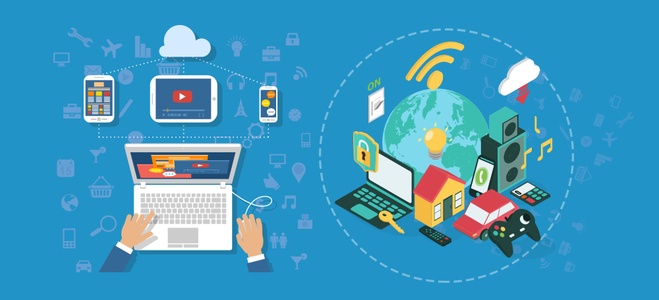Internet of Things (IoT) vs Internet of Experiences (IoX)

Share This Article
Global Software Development Rates: An Overview
Table of Contents
Subscribe to Our Blog
We're committed to your privacy. SayOne uses the information you provide to us to contact you about our relevant content, products, and services. check out our privacy policy.
Internet of Things (IoT) has created new opportunities to connect a large number of devices and utilize data in the digital world. Enterprises have actively used IoT as a medium to connect their ‘n’ number of devices and collect massive amounts of data to merge both the physical and digital worlds.
However, IoT is not only about the connected devices and collected data but also on end-user experience. This is where we find the need for an Internet of Experiences (IoX) approach more important than just focussing on the Internet of Things (IoT). 4
Internet of Experiences over the Internet of Things
Every enterprise is on its run to inculcate some essence of IoT into their business. They want to capture as much data as possible and use it to gather insights more insights regarding customer behavior.
Well, it is quite easy to get carried away seeing the glitter and glam of new technologies. Many of us fall prey to this trend after listening to the wonders one could possibly do with these latest technologies. A similar scenario can be seen with enterprises acknowledging IoT in their business.
Behind every technology, there is a customer who uses it for the betterment of an existing situation. IoT has made it a lot easier to connect devices and use them smartly in our daily lives. The future of IoT lies in analyzing and understanding customer behavior, activity and buying trends. Enterprises that are largely investing in IoT need to understand this changing aspect of IoT and improvise it in their strategy. If utilized effectively, IoT can necessarily bridge the gap between business deliverables and customer experience.
Read more on How DevOps will Play a Crucial Role in Your Business
While considering customer experience, it is highly important to acknowledge the security concerns of customers. Lately, customers have raised concerns over personal data security on these connected devices. In addition to efficiently analyzing customer behavior and providing rich customer experience, the security of personal data is critical for building trust among the customers.
Bottom Line
Implementing new technology and gathering insights is not a smart digital strategy. Instead, positive feedback from the user determines the success of your new digital strategy. It can accelerate business profits ten times faster than any reforms introduced for increasing productivity. Instead of visioning IoT as a source for business transformation, it should be seen as a medium for improved customer experience. If your digital transformation strategy is in place with IoT, it is always better to get started with the customer first and then, technology for fruitful results.
Looking for web or mobile app development services? Get in touch for a free consultation! from our Experts.
Share This Article
FAQs
IoT connects "things" like wearable and biometric devices to our internet infrastructure, allowing for seamless interactions and transactions.
IoT vs IoE vs M2M | What is the difference between IoT, IoE, and M2M? IoT is for the Internet of Things, IoE stands for the Internet of Everything, and M2M stands for Machine to Machine Communication. Because the IoE network was built on the same foundation as the IoT network, the core structure and protocols are identical.
Dishwashers, refrigerators, smart TVs, smart watches, automobiles and trucks, heating and cooling systems, fitness equipment, and trackers are all examples of IoT-enabled items with which you may be familiar!
Subscribe to Our Blog
We're committed to your privacy. SayOne uses the information you provide to us to contact you about our relevant content, products, and services. check out our privacy policy.

